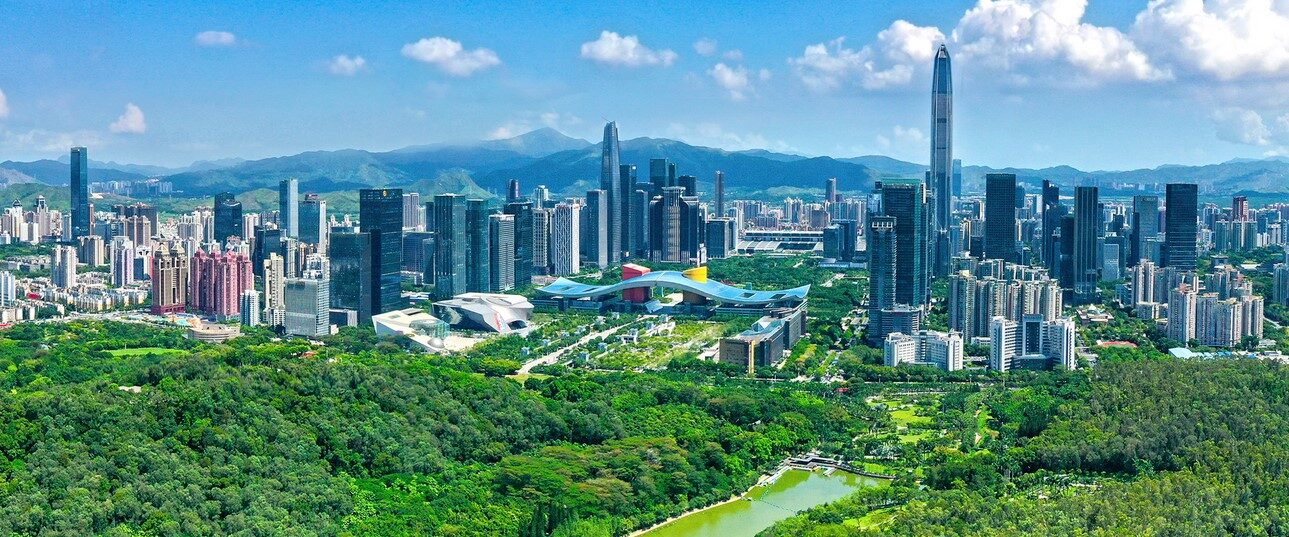When Hong Kong is mentioned, people often think of its towering skyscrapers, dazzling harbor lights at night, and the fragrant tea culture found throughout its bustling streets and alleys. This city, where Eastern and Western cultures blend seamlessly, not only boasts a modern and prosperous facade but also hides tranquil spots nestled between mountains and sea, along with a rich cultural heritage. Below are several must-visit destinations in Hong Kong, where whether you are a first-time visitor or a frequent traveler, you are sure to discover new delights.
Victoria Peak
Victoria Peak, also known as Mount Austin or simply “The Peak,” is the highest point on Hong Kong Island, standing at an elevation of 552 meters (1,811 feet). It’s one of Hong Kong’s most famous tourist attractions, celebrated for its spectacular panoramic views of Central, Victoria Harbour, and the surrounding islands.
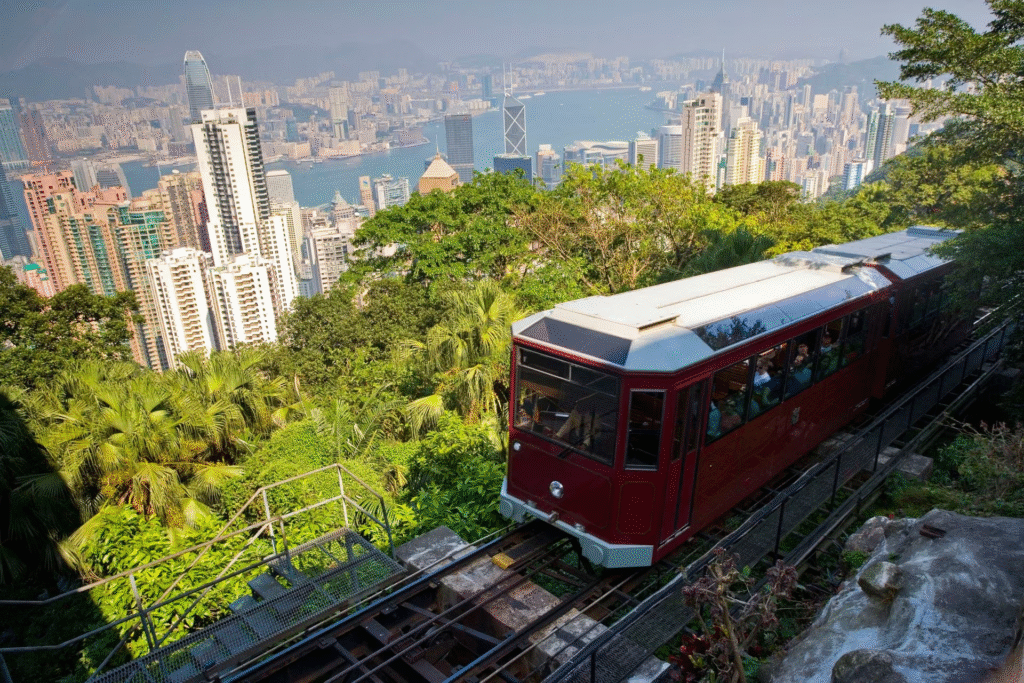
Its historical significance dates back to the 19th century when, due to Hong Kong’s hot and humid climate, the cooler, more comfortable environment of Victoria Peak made it an attractive summer retreat for wealthy residents and foreign diplomats. Initially, people were carried up and down the mountain in sedan chairs, a mode of transport that was later revolutionized by the Peak Tram. This iconic funicular railway, which opened in 1888, dramatically improved access and led to a steady increase in both residents and visitors.
Although a ban on Chinese residents on the Peak was enacted in 1904, it was eventually lifted in 1947. Today, Victoria Peak draws over 7 million visitors annually, cementing its status as a premier tourist destination.
During the day, the peak is bright and vibrant. Sunlight reflects off the glass facades, making the entire city resemble a polished gemstone. At night, when the first row of buildings light up and Victoria Harbour begins to ripple with reflections, those once distant dreams seem to walk right out from the horizon.
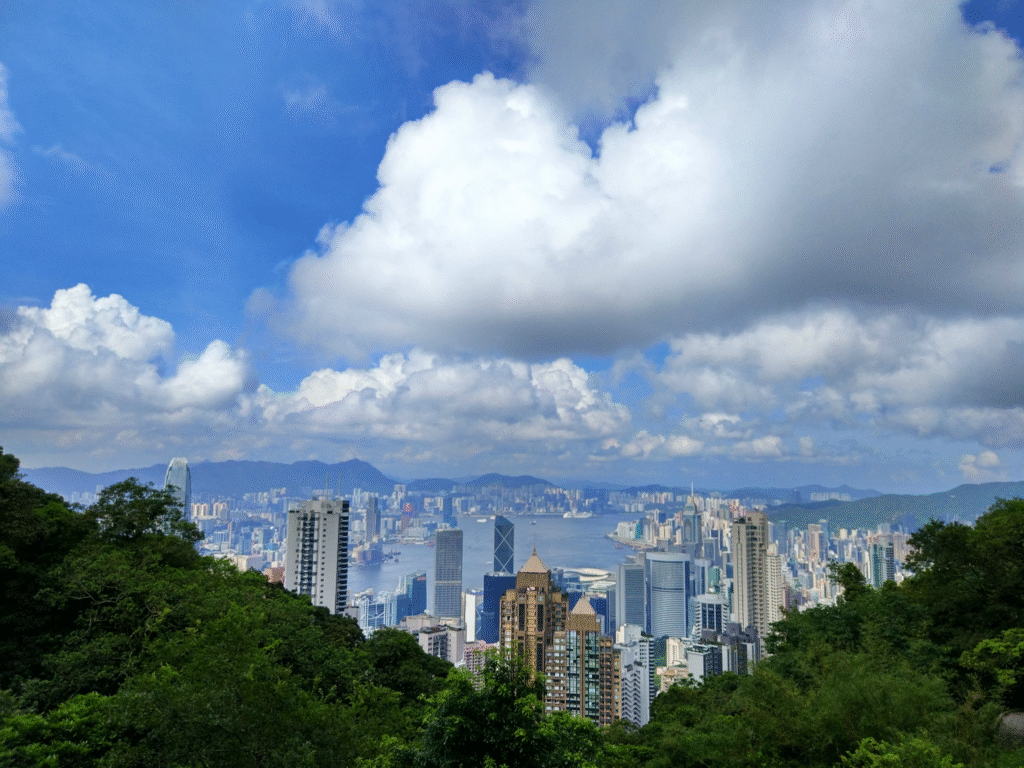
Victoria Harbour
Victoria Harbour, often simply called Victoria Harbour, is a natural harbor situated between Hong Kong Island and the Kowloon Peninsula in the Hong Kong Special Administrative Region. It stands as one of Hong Kong’s most iconic landmarks.
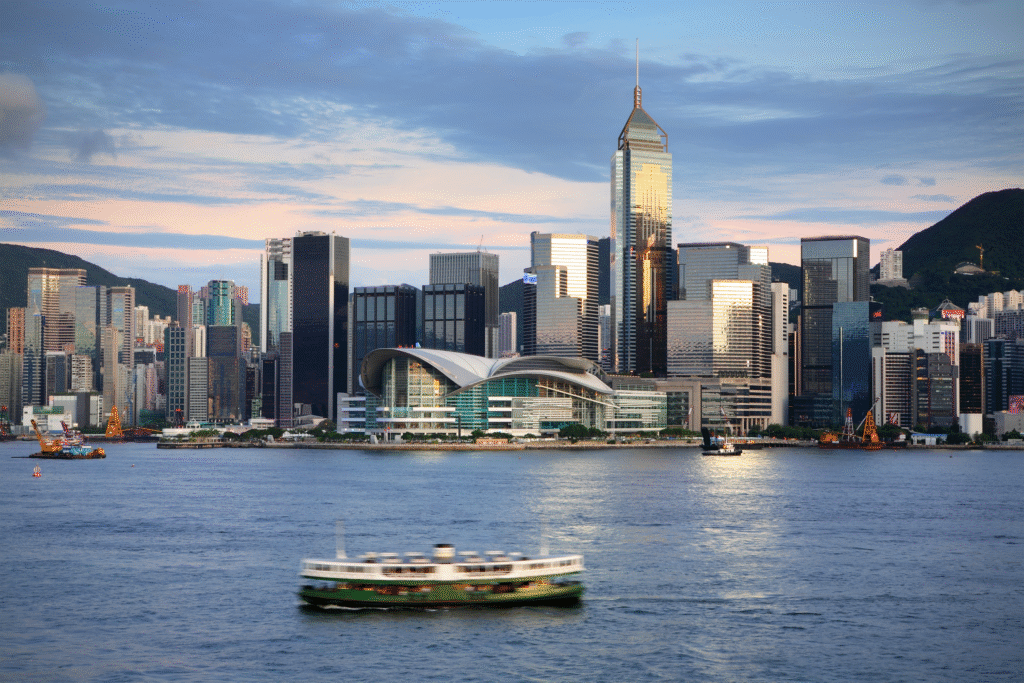
Victoria Harbour’s origins trace back approximately 7,000 years. Historical Chinese documents referred to it by names such as “Tsim Sha Tsui Ocean” or “Central Gate.”
After the Opium War, Hong Kong Island and the Kowloon Peninsula were ceded to Britain. The port was officially named Victoria Harbour in 1861, in honor of the reigning British monarch, Queen Victoria.

Since its establishment, Victoria Harbour has been crucial to Hong Kong’s foreign trade, especially entrepôt trade, laying the foundation for the region’s economic development. Large-scale land reclamation projects, such as the Bonham Strand Reclamation in 1852, significantly expanded the urban area along the coast.
Wong Tai Sin Temple
The history of Wong Tai Sin Temple dates back to 1897, when Taoist priest Liang Ren’an received divine guidance from Wong Tai Sin in Panyu, Guangdong. In 1915, Liang Ren’an brought an effigy of Wong Tai Sin to Hong Kong, establishing the “Pui Yee壇” in Wan Chai.

By 1921, following Wong Tai Sin’s instructions, a new temple was completed in Chuk Yuen Village, Kowloon, which is the Wong Tai Sin Temple we see today. The temple is managed by Sik Sik Yuen, a charitable organization founded in 1921. Adhering to the principle of “to act benevolently and to teach benevolence,” Sik Sik Yuen is dedicated to providing healthcare, education, and elderly care, along with other social welfare services. In May 2010, the Hong Kong SAR Government designated Wong Tai Sin Temple as a Grade I Historic Building.
Dragon’s Back
Located on the southeastern side of Hong Kong Island, Dragon’s Back traverses the Shek O Peninsula and forms part of Section 8 of the Hong Kong Trail. Its distinctive name comes from the undulating, dragon-like ridge of the mountain, particularly striking when viewed from above. The trail typically begins at To Tei Wan on Shek O Road and concludes at Big Wave Bay.

Lantau Island
Lantau Island, Hong Kong’s largest island, is situated in the western waters of Hong Kong, covering an area of approximately 148 square kilometers. It’s renowned for its unique natural landscapes, rich cultural heritage, and world-class tourist facilities, making it a vital part of Hong Kong’s tourism.

The cable car drifts through the mist, gradually approaching the Buddha statue. The Tian Tan Buddha has sat silently for years amidst the mountains, watching over visitors and the city’s rise and fall. It says nothing but knows everything.
After descending, Tai O feels like another world. The stilt houses still carry the essence of a fishing village—dried salted fish hanging out to cure, rocking boats, elderly chatting by the bridge… Here, time flows like water—slow, endless, and without purpose, just flowing.
Mong Kok
Mong Kok, situated in the heart of the Kowloon Peninsula in Hong Kong, stands as one of the world’s most densely populated areas. It’s renowned for its vibrant street culture, distinctive retail experiences, and bustling nightlife, making it an excellent place to immerse yourself in authentic Hong Kong atmosphere and feel the pulse of the city.
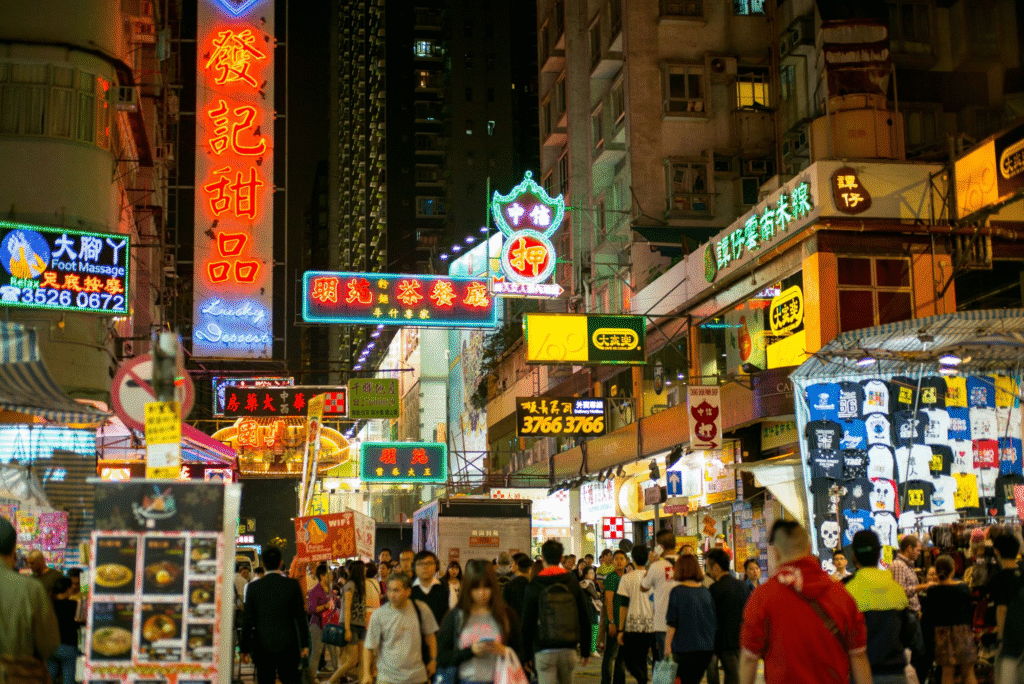
Mong Kok is the pinnacle of hustle and bustle and the essence of daily life. Streets are narrow, stalls overcrowded, and the crowds dense. Yet together, it forms the truest face of Hong Kong.
You can pick a cheap yet charming trinket on Ladies’ Market or order a bowl of fish ball noodles at a cha chaan teng that looks unappealing—but once you start eating, you don’t want to speak until it’s finished. The city rushes forward, but here, the rhythm of everyday life still lingers.
West Kowloon Cultural District
The West Kowloon Cultural District (WKCD) is an ambitious cultural infrastructure project in Hong Kong, located on approximately 40 hectares of reclaimed land in West Kowloon, facing Victoria Harbour. It aims to transform Hong Kong into a world-class integrated arts and cultural hub, combining art, education, public spaces, and commercial elements to elevate the city’s cultural standing and international profile.
This place is new, but not cold. The M+ Museum stands by the sea like a steady stone, housing the memories and future of a city.

The seaside promenade is my favorite spot. The wind blows in from Victoria Harbour, brushing past grass and the scent of coffee, as the sunset slowly sinks into the sea. You’ll see people sitting in quiet thought, painting, or simply gazing at the water—they don’t speak, but you know they’re all waiting for an answer.
Conclusion
Hong Kong may be a small city, but it deserves a lifetime to truly savor. It offers breathtaking night views, sincere wishes in its temples, expansive vistas from mountain ridges, and the vibrant bustle and warmth of its streets and alleys. No matter how many times you visit, you’ll always find new paths to take, different scenes to admire, and new versions of yourself to meet.
When you leave your last destination, you’ll realize that what we call “travel” is actually a unique kind of encounter—not only with the city itself but also with the softest places within your own heart.
